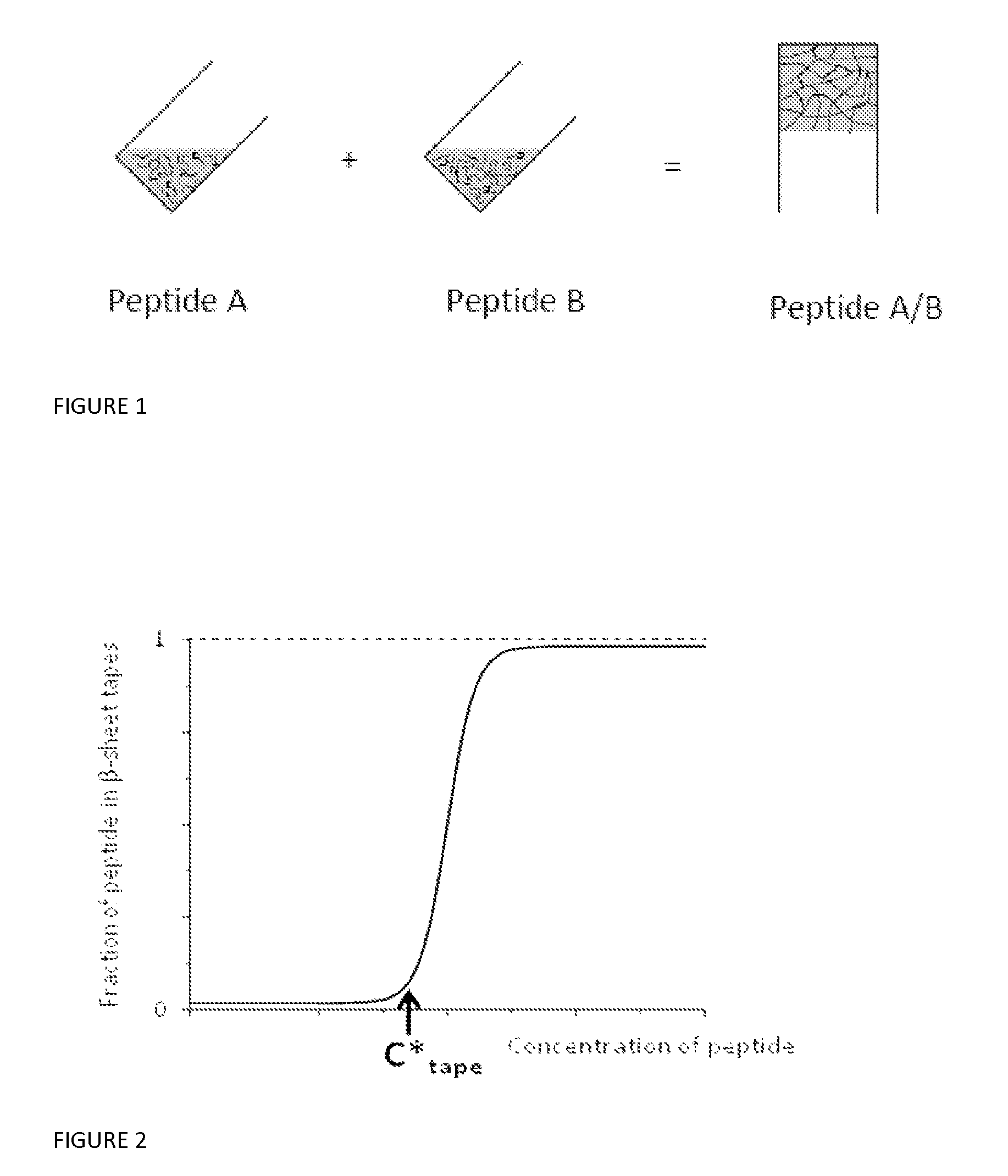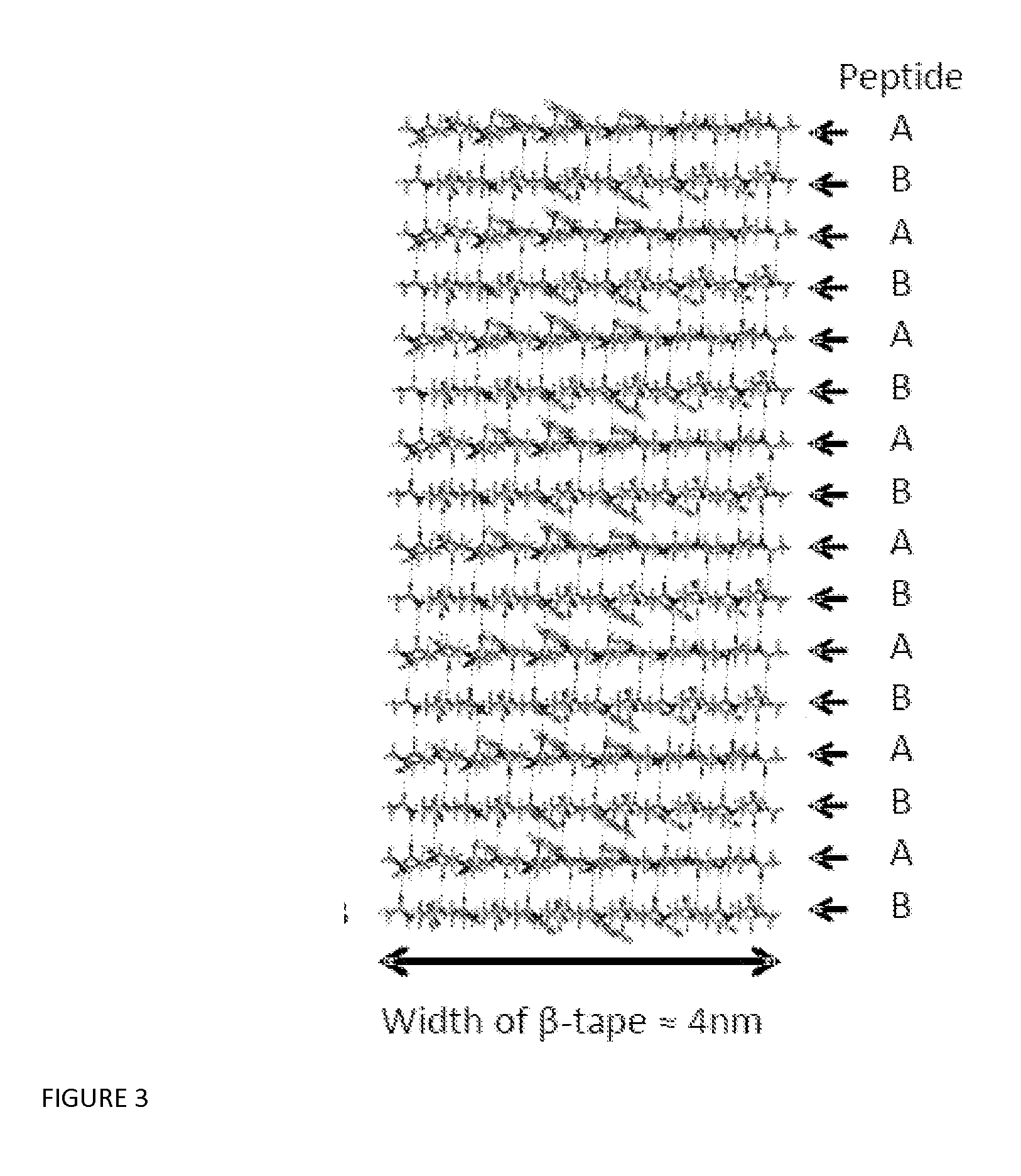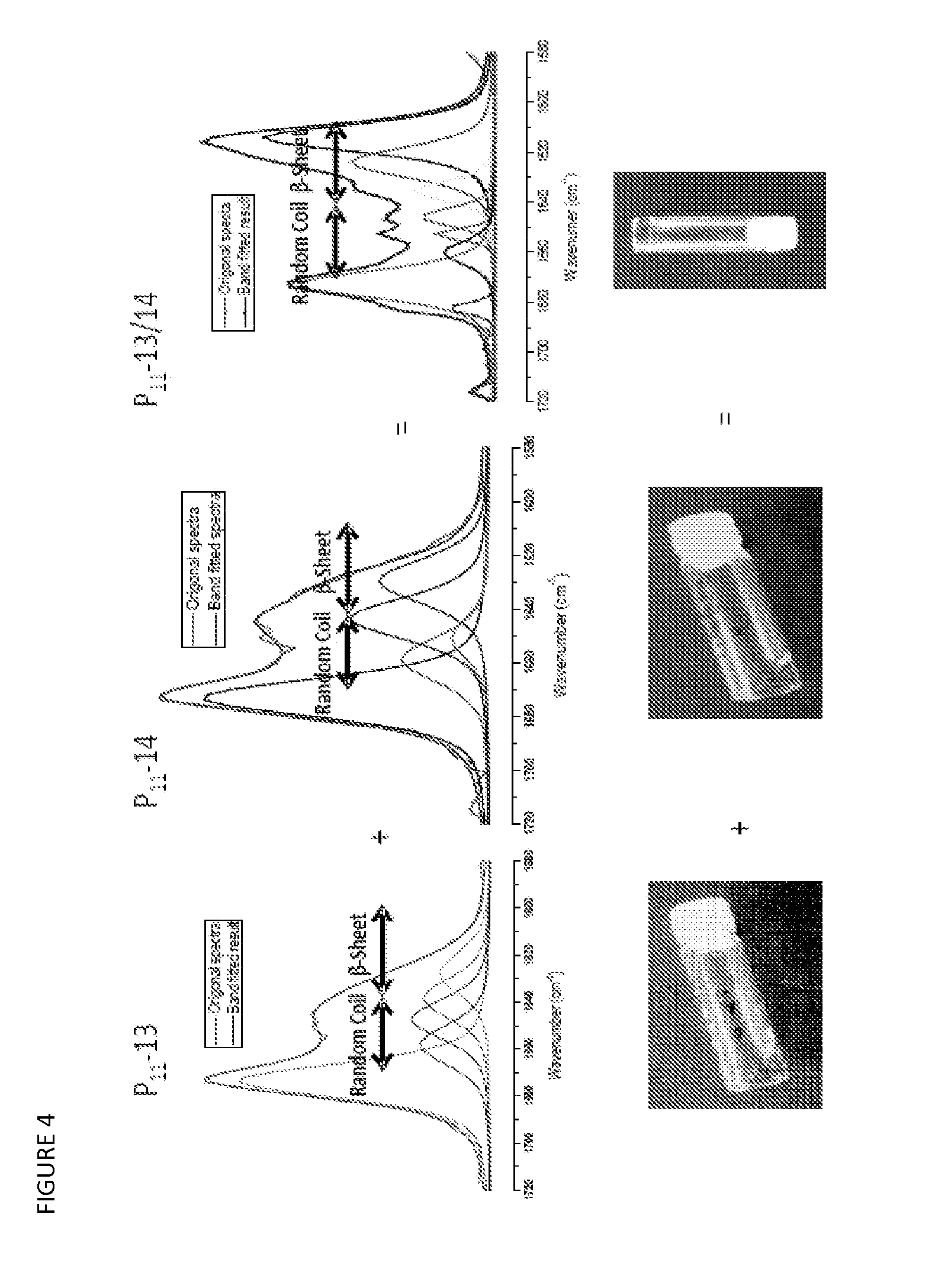Beta sheet tapes ribbons in tissue engineering
- Summary
- Abstract
- Description
- Claims
- Application Information
AI Technical Summary
Benefits of technology
Problems solved by technology
Method used
Image
Examples
example 1
Synthesis, Purification and Sterilisation of Peptides
[0130]Complementary peptides were synthesized using standard 9-fluorenylmethoxycarbonyl (FMOC) chemistry protocols as described in Aggeli et al. (J. Mat. Chem., 7:1135, 1997). Peptides were purified by reversed-phase HPLC using a water-acetonitrile gradient in the presence of 0.1% trifluoroacetic acid or ammonia as buffer A and 10% buffer A in acetonitrile as buffer B. Mass spectrometry showed the expected molecular weights. Peptides were sterilized in the dry state using γ-irradiation (2.5 MRad) with a Gammacell 1000 Elite irradiator. TEM and mass spectrometry were used to assess any damage to the peptide structure and fibril formation.
[0131]Four pairs of systematically varied complementary peptides were designed following the design criterion of +2 / −2 net charge per peptide pair that applies to single peptide gels in physiological solutions. In all cases, the individual peptides were found to be monomeric random coils and to for...
example 2
Comparative Gelation Studies
[0132]Samples of all complementary pairs P11-13 / 14, P11-26 / 27, P11-28 / 29 and P11-30 / 31 were prepared at concentrations of 2, 3, 5, 10, 15, 20 and 30 mg / ml. Peptides were weighed out (Mettler AE 240 balance) and diluted to produce the correct concentration, taking peptide purity into account, using DMEM solution (for dilution volumes and peptide weights of all sample produced see appendix 2). Small amounts of acid (HCl 1M, 0.5M or 0.1 M) and base (NaOH 1M, 0.1M) were added and gentle heating applied when the peptide did not fully dissolve. The monomer solutions were combined in a 1:1 molar ratio to produce a mixture of the 2 complementary peptides, once mixed the room samples were placed in an incubator (Labnet Mini Incubator, 9 litre, analogue, gravity convection) heated to 3° C. and left to reach equilibrium. Observations were carried out once a day over a one week period to determine the concentration at which gelation occurs therefore ascertaining when...
example 3
Transmission Electron Microscopy Studies
[0134]The room temperature D2O samples of all four complementary peptide pairs of concentration 15, 20, 30 mg / ml underwent TEM analysis. The samples in TEM are required to be very thin, around 40-60 nm thick, and are supported on a thin copper mess which offers a reasonable viewing area and are conductive enabling discharge of excess electrical charge produced by the electron beam to the microscope column. The copper grids are covered in a ultra thin carbon film which serves as an electron transparent support for the sample. Two small volumes of each sample were transferred to two different sample vials and diluted with D2O to produce two samples one with 15 and 50 times diluted. This dilution was carried out to ensure the sample, which when applied to the copper grids, would be thin and have a decreased salt content enabling the production of good TEM images. Carbon coated copper grids (Athene hexagonal 400 mesh copper 3.05 mm) were exposed t...
PUM
| Property | Measurement | Unit |
|---|---|---|
| concentration | aaaaa | aaaaa |
| concentration | aaaaa | aaaaa |
| concentration | aaaaa | aaaaa |
Abstract
Description
Claims
Application Information
 Login to View More
Login to View More - R&D
- Intellectual Property
- Life Sciences
- Materials
- Tech Scout
- Unparalleled Data Quality
- Higher Quality Content
- 60% Fewer Hallucinations
Browse by: Latest US Patents, China's latest patents, Technical Efficacy Thesaurus, Application Domain, Technology Topic, Popular Technical Reports.
© 2025 PatSnap. All rights reserved.Legal|Privacy policy|Modern Slavery Act Transparency Statement|Sitemap|About US| Contact US: help@patsnap.com



